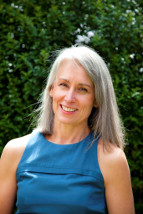Talking about tricky stuff with kids by Shona Innes

For more than 25 years now, I have had been in the privileged
position of listening to the very private worries and concerns of
many children. It is indeed a pretty special and sacred
position to be in and I am always grateful for the opportunity. From
that special spot with young people, I have been privy to their
inner most thoughts, how they perceive themselves and others, and
the things that they truly value.
When you take some time to understand how each child views the
World, there's a moment where you can start to see the patterns of
their feelings and their emotional 'logic'. Once you have
found that moment or place, you can help a child to unwind the
tangled experiences and interpretations so that they can deal with,
accept or begin to change their emotional situation. To unwind
it, means you have to have a shared explanation. You need
something that the child can 'get' and understand.
When your client is a child, there is also a need to advocate for
them within the various systems that they belong. To do this you
need to be able to help their support team, (their families, their
carers, their teachers, their welfare workers, their treating
psychologists, their doctors, and their special people) to share
that same special understanding. After each session with a young
person, I usually write them a letter. By writing and sharing the
concepts discussed during the sessions, I hope to reinforce what the
child and I have learned together and do so in a way that they can
share with their support team.
Young children cannot always understand a metaphor the first time
around so it requires repeated simple links via words and
pictures. I look for metaphors that all ages can understand so
that the child can communicate about complex situations in simple
ways with the people who know them best. In talking about life (and
death), I wanted to base it on something that you know is there, but
can't really touch . . . the wind. For dealing with the internet,
I wanted something that could be fun if played with carefully, but
could also have some slippery spots that need supervision and
help . . . a puddle. For the others in the playground, I wanted
a whole heap of metaphors to describe all the different types of
personalities that mingle there . . . jungle creatures. The ups
and downs of friendship were always going to be a seesaw. The
next two in the Big Hug series are much more intimate and have been
written for children when their might be trouble in their families
or in the family of someone they know.
The human brain is very complex. There are lots of pathways
that a thought or experience can take in a young brain. If a
thought or experience has been laid down in childhood, then it needs
a child friendly way of mapping it so it can be traversed.
Finding a shared pathway can take the 'ickiness' or 'nagging' out of
some tricky concepts and allow a child and their special people a
way to work and talk together.